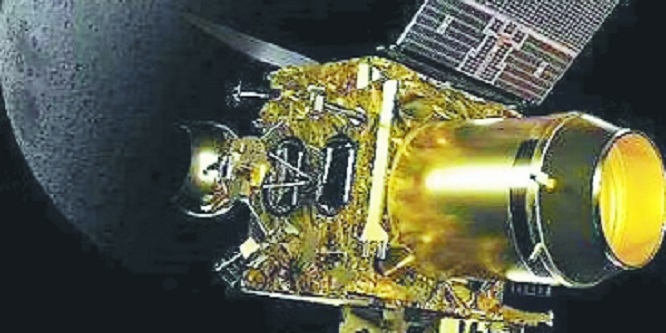Chandrayaan-2 spectrometer makes first observations of global distribution of Argon-40 in Exosphere of Moon
| Date :09-Mar-2022 |

Bengaluru :
THE Chandra’s Atmospheric Composition Explorer-2 (CHACE-2), a quadrupole mass spectrometer onboard Chandrayaan-2 mission, has made the first-of-its-kind observations of the global distribution of Argon-40 in the tenuous lunar exosphere, according to the Indian Space Research Organisation. These observations provide insight on the dynamics of the lunar exospheric species, as well as on the radiogenic activities in the first few tens of metres below the lunar surface, the Bengaluru-headquartered space agency said in a statement on Tuesday.
‘Exosphere’ is the outermost region of the upper atmosphere of a celestial body where the constituent atoms and molecules rarely collide with each other and can escape into space. Earth’s Moon features a surface-boundary-exosphere. For Moon, different constituents in the exosphere are fed from the surface by a variety of processes, such as thermal desorption, solar wind sputtering, photo-stimulated desorption, and micrometeorite impact vaporisation. The exospheric atoms may be lost to space by the thermal escape (also known as the Jean’s escape). Also, the atoms get ionised by photo-ionisation and charge exchange with the solar wind ions.
Subsequently, they can be swept away by the convective electric field of the solar wind. Some of these atoms/ions can also be deposited back on the lunar surface. Thus, the lunar exosphere exists as a result of a dynamic equilibrium between several source and sink processes. Noble gases serve as important tracers to understand the processes of surface-exosphere interaction, and Argon-40 (Ar-40) is such an important tracer atom to study the dynamics of the lunar exospheric species, the statement said. Ar-40 originates from the radioactive disintegration of Potassium-40 (K-40) present below the lunar surface. Once formed, it diffuses through the inter-granular space and makes way up to the lunar exosphere through seepages and faults.